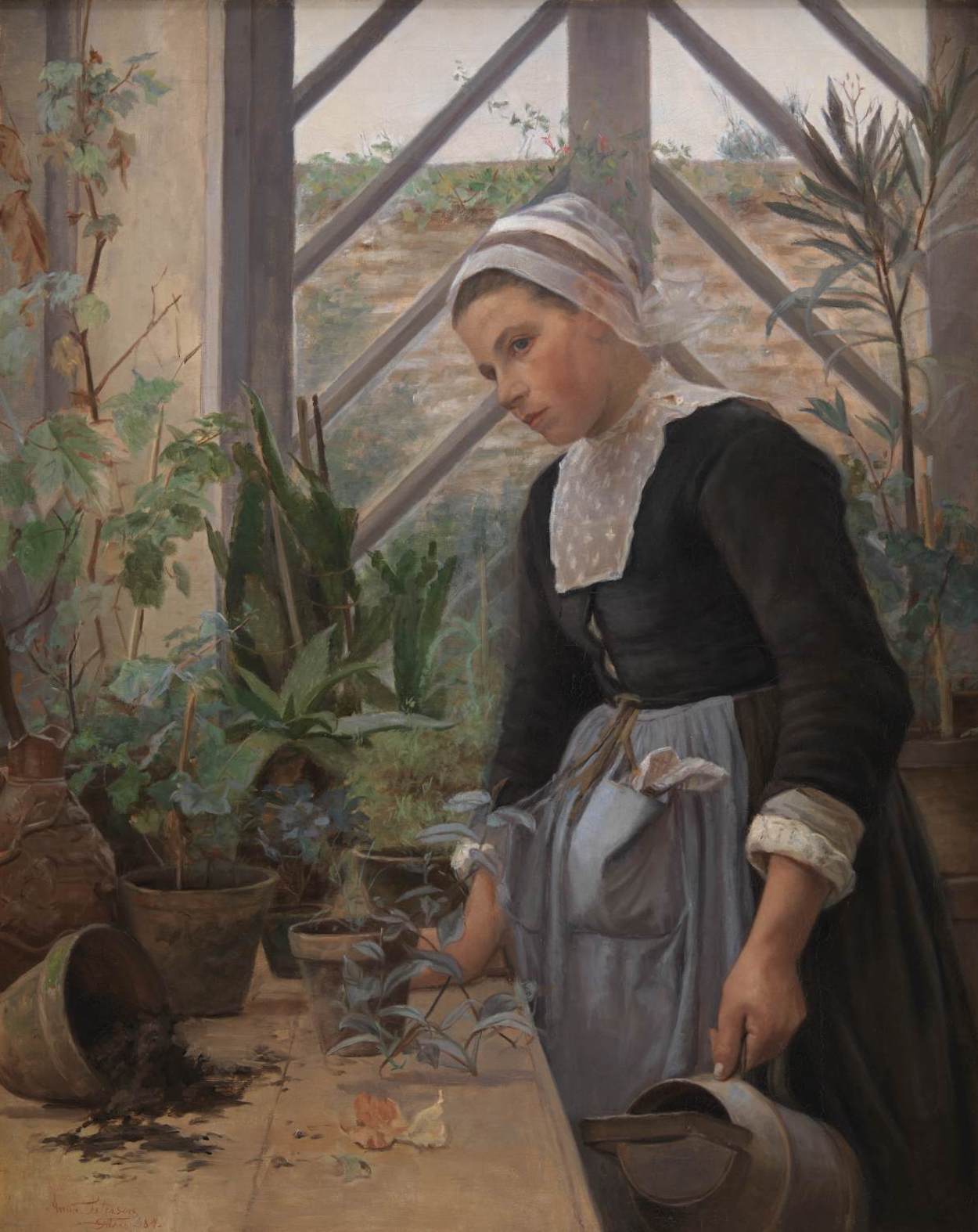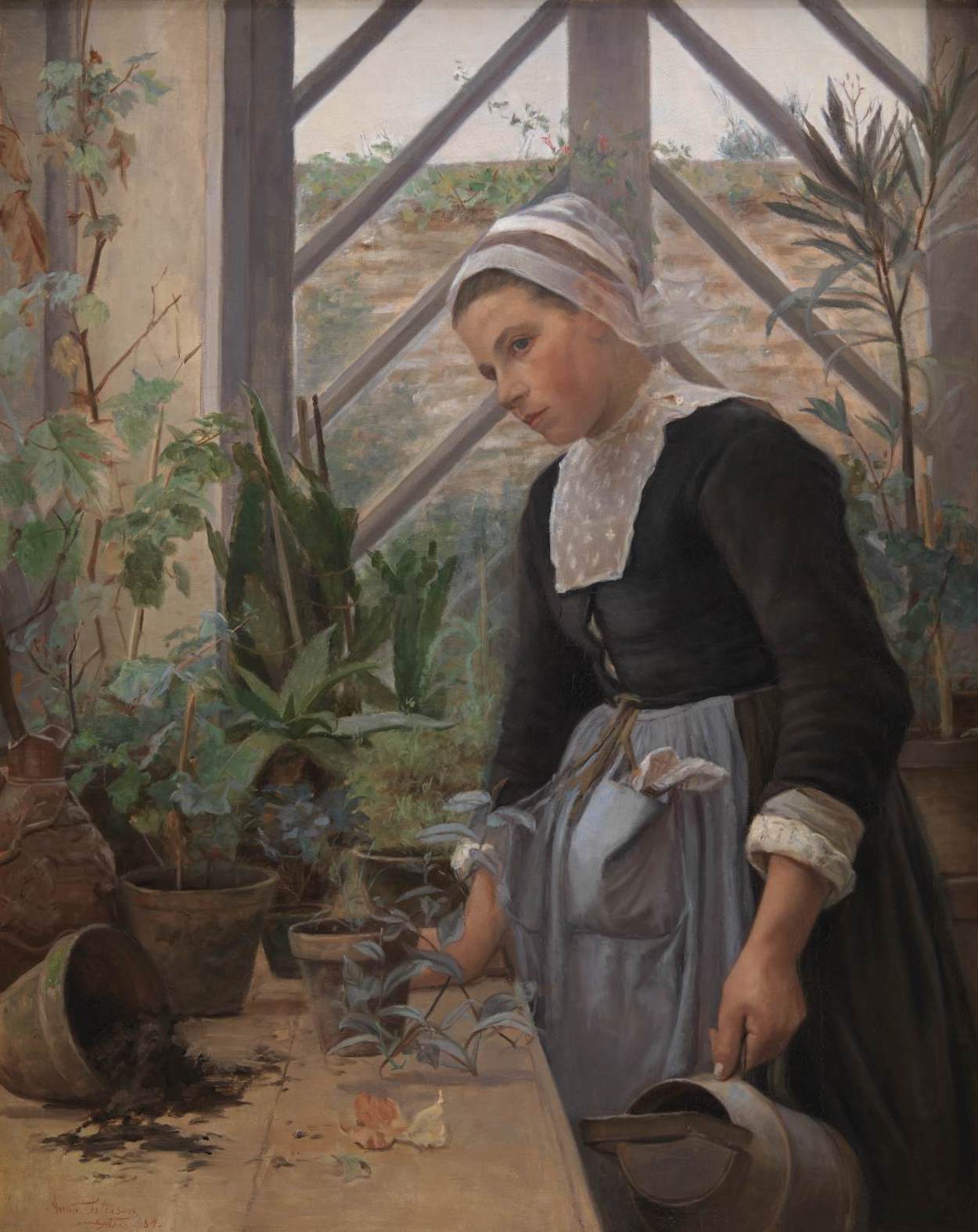In Anna Petersen’s day, women were neither allowed to vote nor to enroll at the Academy of Fine Arts. The artist has shown this woman engaged in thought rather than labor, thereby manifesting how women are independent, thinking beings in their own right.
The girl looking after plants in a hothouse is not, in fact, looking after anything while she is being painted. This may be because she is modelling, but also because she has an inner life of such strength and fervor that she cannot simply just toil. In the 1880s, painting women with inner lives of their own clearly demonstrates how women are arriving at a new sense of self-worth. They are not simply the property of men, nor are they unthinking creatures ruled by their urges. This woman is her own mistress, and she knows how to cultivate nature. She lives at a time ripe for replanting for new flowers to grow—both at a concrete level and metaphorically.
Anna Petersen was a friend of Anna Ancher, Marie Luplau, Emilie Mundt, and Bertha Wegmann. If they could not vote or enroll at the Academy of Fine Arts, they fervently hoped that future generations of women would be able to. Despite these restrictions, Anna Petersen was quite successful as an artist for a while. In 1899, Marie Luplau wrote a description of Anna Petersen’s paintings in the journal Hvad vi vil. Organ for Kvindesagen - Fredssagen - Arbejdersagen (What We Want. A Journal for The Women’s Cause - The Peace Cause - The Workers’ Cause), stating that they might seem slightly dry, but that the artist excelled at working with "the Atmosphere of the scene." Despite the support of her friends, whose numbers included the highly influential J.F. Willumsen, Anna Petersen sold no works to museums while she lived, and she suffered from a growing "nervous restlessness" that gradually robbed her of the ability to work.
We present today's work thanks to Statens Museum for Kunst.
See you tomorrow!
Here you will find five self-portraits by incredible women artists that you probably haven’t seen (and you should)!


 Anna Petersen
Anna Petersen